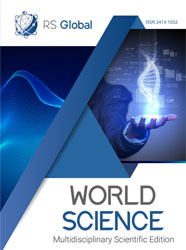МЕХАНІЗМИ ПСИХОЛОГІЧНОГО ЗАХИСТУ ТА ЇХ ВЗАЄМОЗВ'ЯЗОК З ГЕНДЕРНОЮ ІДЕНТИЧНІСТЮ У ЮНАЦЬКОМУ ВІЦІ
Abstract
The article the features of the manifestations of the defense mechanisms of the psyche and their relation to gender identity in adolescence were considered. We have examined that in the manifestation of mechanisms of psychological defense there is a clear gender differentiation. It was found that the psychological defense mechanisms that are typical for men positively correlate with the defense mechanisms that are specific to feminine gender. Consequently, we can assume that men who are at socially-cultural, namely at the gender level, show more women's personality features, which appear unconsciously, as indicated by mechanisms of psychological defense, are use conditional women's strategies.
References
Бэм С. Вопросник по изучению маскулинности – фемининности / Практикум по гендерной психологии Под ред. И.С.Клециной. СПб., 2003.– 280 с.
Берн Ш. Гендерная психология: Законы мужского и женского поведения. СПб., 2007.– С.41-45.
Гребенников Л.Р. Механизмы психологической защиты. Генезис. Функционирование. Диагностика. Под ред. Гребенникова Л.Р. - Мытищи: Талант, 2007. – 196 с.
Эриксон Э. Идентичность: юность и кризис / Э. Эриксон. – М. : Флинта, 2006. – 342 с.
Налчаджян А. А. Психологическая адаптация: механизмы и стратегии / А. А. Налчаджян. – М. : Эксмо, 2010. – 368 с.
Фрейд А. Психология Я и защитные механизмы. Пер. с англ. - М.: Проспект, 2009. – 256 с.
Фрейд З. Введение в психоанализ : Лекции / З. Фрейд. – СПб. : Лениздат, 2012. – 544 с.
Фрейд З. Я иОно. По ту сторону принципа удовольствия. – М.: АСТ, 2011. – 288 с.
Хьелл Л. Зиглер Д. Теории личности. – 3-е изд. – СПб.: Питер, 2005. – 607 с.
Plutchik R. Emotions and psychotherapy: A psychoevolutionary perspective / R. Plutchik, H. Kellerman (Eds.). Emotion: Theory, research and experience. Vol. 5: Emotion, psychopathology and psychotherapy. San Diego., 1990.
Views:
238
Downloads:
356
Copyright (c) 2018 Authors

This work is licensed under a Creative Commons Attribution 4.0 International License.
All articles are published in open-access and licensed under a Creative Commons Attribution 4.0 International License (CC BY 4.0). Hence, authors retain copyright to the content of the articles.
CC BY 4.0 License allows content to be copied, adapted, displayed, distributed, re-published or otherwise re-used for any purpose including for adaptation and commercial use provided the content is attributed.











